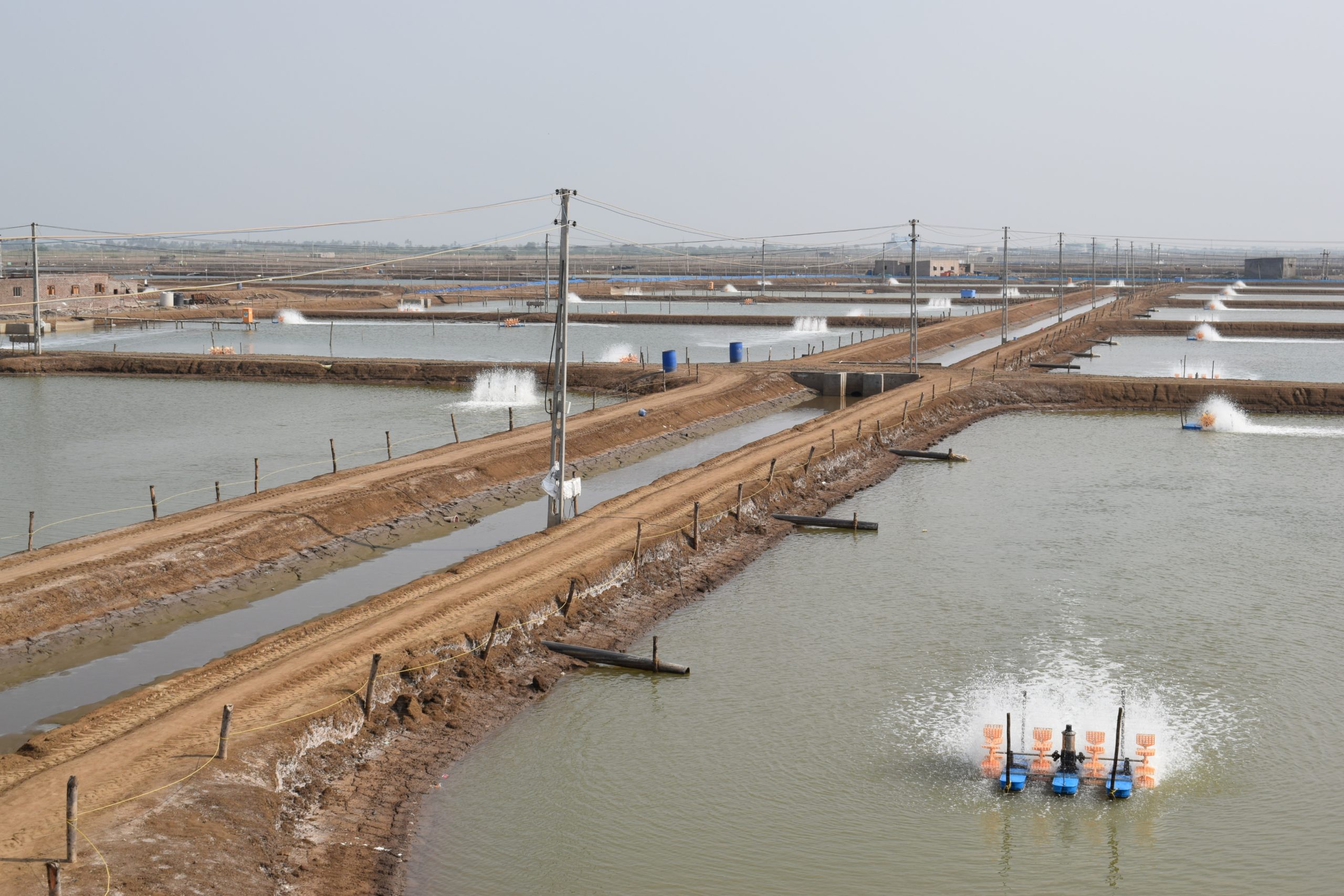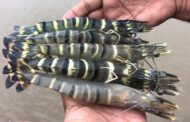PravashPradhan
Uncertainty has gripped the shrimp industry. The outbreak of Coronavirus has not only shaken the morale of the shrimp farmers but will also surely impact the Indian economy. India produced and exported over 8 lakh tons of shrimp in 2019. The total value of shrimps exported was about Rs,35 000 crores. The estimated area of shrimp farming, both scientific and traditional, in India is around 221000 hectares, thereby generating lakhs of employment opportunities and contributing to the national economy.
But COVID 19 has dashed hopes of the shrimp farmers across the country. They have delayed stocking due to the fear of heavy financial loss. Only 15-20 % of the stocking is reported in different parts of the country. Mostly stocking for the Summer crop in major shrimp producing states like Andhra Pradesh, West Bengal, Odisha, Gujarat, Maharashtra, Tamil Nadu, Karnataka, and Kerala takes place between January to April in varying degrees. Also, several farmers in Andhra Pradesh start harvesting during April-May.
Thus, whether it is stocking or harvesting, all farm activities have been severely affected due to prolonged lockdown. The paucity of labor, short supply of inputs (seed, feed, and medicine), lack of transportation, non-functioning processing factories and decline in export has compounded the worries of farmers.
SMART AGRIPOST spoke to several farmers and stakeholders to get a holistic view of shrimp farming during the pandemic period.
Take an example of Andhra Pradesh which contributes 70% of India’s total shrimp production valued at Rs 24,500 crores. The nationwide lockdown brought the farm activities to a grinding halt for the first two-three weeks. Several farmers went for panic harvesting and were forced into distress selling. However, early intervention of the Andhra Pradesh government and MPEDA in fixing a minimum support price brought some relief to the local farmers. However, the non-availability of farmworkers, lack of transportation and police excess added to the miseries of prawn farmers.
Shivraj Raju, who owns 10 hectares of shrimp farm and 25-hectares fish farm in Bhimavaram, lauds the efforts of the state government for announcing a support price for shrimp farmers. However, it did not mitigate the problems of the farmers.
Raju said, “Processors used to buy 400-500 tons of shrimp every day during the regular period. During the lockdown period, they are only purchasing 30% of their capacity i.e 120-150 tons per day. And they will make the payments in two months. Earlier they used to pay in a week’s time”.
He is also circumspect on the issue whether he will go for culture now or will wait for another two-three months
The main difficulty being faced by farmers in AP is the acute shortage of farmworkers. Though the Centre and State governments have exempted fisheries and aquaculture activities from lockdown, yet police are overreacting and beating up the workers.
“We need about 50 workers during the harvesting period. But only five workers are allowed to travel in a van. In this scenario, it is very difficult to harvest the crop or prepare for the next culture. The government should do something urgently for the smooth transportation of workers,” rued Raju.
Most of the farmers plan to go for 20-25% stocking of their full capacity during this uncertain time. They are waiting for things to be normal and may start culture during May-June.
“I’ll start farming in two hectares only and go for low stocking density (20-25 counts). Increasing domestic consumption and demand will make shrimp farming sustainable in the country,” Raju said.
It is not that only shrimp farmers in AP are facing hardships. Problems are acute in other states also. For example, hardly 15-20% of the stocking has been done in Odisha. If you take Balasore district, there may be 15% of the stocking reported by the first week of April. During normal times, it may have gone up to 70-80% by now.
Krushna Gopal Panda who owns 70 acres farm at the Inchudi Coast in Balasore district said, “There will be single crop in several areas in the district this year. The first crop has already been delayed by 45 to 60 days. If the situation gets normal by April end, then people may go for stocking during May-June depending upon the availability of seeds”.
Also, people in the flood-prone areas fear stocking during monsoon time. Last year, monsoon crop was not successful in most of the parts because of slow growth, low survival rates, and higher FCR.
West Bengal which is another major shrimp producing state is also facing the same problem. It produced about 92000 MT Vannamei last year. More than 30000 farmers are practicing shrimp farming. Scientific culture is taking place in 17000 hectares. More than six lakh people, directly or indirectly, are depending on aquaculture in the state.
Madan Mohan Mandal, Vice President, Purba Medinipur Prawn Farmers’ Welfare Association said, “Farmers start stocking by the 2nd or 3rd week of January. It is the month of April now. People have stocked only 25-30 % as compared to more than 70% during the same period last year. Neither MPEDA nor the State government has come forward to support the poor farmers. They don’t know what to do in the current situation.”
Gujarat shrimp farmers are also in a fix. Gujarat is the fourth-largest producer of shrimp in India. There is hardly any stocking during February-March. Most of the farmers were aware of the outbreak of Covid 19 in China in December 2019 and the falling export demands thereof. The farmers have also borne the brunt of lockdown.
Dr. Manoj Sharma who owns about 200 hectares farm in Surat said, “Based on my 25 years of experience in shrimp farming in Gujarat, I have seen several disasters like floods and earthquakes. One thing is sure that people need food even during the disaster. It is the necessity of life. When it comes to me, I am going all in. I will be stocking in three to four phases like 50-50 hectares. But I am going for low stocking density with a maximum of 15 pieces. The advantage of low stocking density is that you can sustain the shrimp farming in very positive carrying capacity, so you can survive with less labor and less feed. You can manage the next 90-100 days with the bare minimum requirement. You may arrange 100 days feed in your stock. I am very much positive that there will be huge demand after June-July. There will be high demand in domestic as well as the international market”.
In a short span of 6 years or less, the shrimp farming in Haryana, Punjab and Rajasthan has gained momentum. More than 1200 acres are under shrimp culture. Now the nationwide lockdown has pushed the farmers into the vortex of uncertainty.
Dr Hari Krishna, Officer-in-Charge, CIFE Rohtak Centre, who is handholding the farmers in Haryana, Punjab and Rajasthan said, “Shrimp farming is of a recent origin in this region. Most of the farmers had prepared their Ponds by 1st week of March as they planned for stocking in March-April. Now, everything seems uncertain. Farmers are also worried about falling international trade. Apart from this, farmers don’t find labor and farm inputs as mobility is restricted due to lockdown”.
These states produced more than 5000 tons of prawn in 2019. They planned to increase the shrimp farm area and production as well in 2020. But, the outbreak of Coronavirus followed by lockdown has poured cold water on their growth plan.






